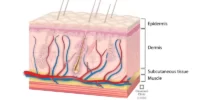Allergy Medications: Types, Uses, And Side Effects
Allergy Medications: Types, Uses, and Side Effects
Allergies are a common health issue that affects a significant portion of the population worldwide. When exposed to certain allergens, individuals may experience a range of symptoms, including sneezing, itching, runny nose, and watery eyes. To alleviate these symptoms, various allergy medications are available, each with its own unique set of uses and potential side effects.
One commonly used type of allergy medication is antihistamines. These drugs work by blocking the effects of histamine, a chemical released by the immune system during allergic reactions.
Nasal sprays and eye drops are also commonly used to relieve symptoms associated with allergies, targeting the specific areas affected, such as the nasal passages or eyes.
Decongestants are another type of medication that can provide temporary relief from nasal congestion caused by allergies.
Corticosteroids, on the other hand, are often prescribed for more severe cases and work by reducing inflammation in the airways.
Immunotherapy, a long-term treatment option, involves gradually exposing individuals to small amounts of allergens to desensitize their immune system.
Combination medications, which contain a mix of different allergy medications, are also available for those who require multiple forms of relief.
When considering allergy medications, it is important to understand the differences between over-the-counter and prescription options. Over-the-counter medications are readily available without a prescription, while prescription medications may be necessary for more severe allergies or when over-the-counter options are ineffective.
To ensure safe and effective use of allergy medications, it is crucial to follow proper guidelines and dosage instructions. Consulting with a healthcare professional is advisable to determine the most suitable medication and dosage for individual needs.
In conclusion, allergy medications play a vital role in managing and alleviating allergy symptoms. Understanding the various types, uses, and potential side effects of these medications is essential for individuals seeking relief from allergies. By following proper guidelines and consulting healthcare professionals, individuals can make informed decisions regarding their allergy medication options.
Key Takeaways
- There are various types of allergy medications available, including antihistamines, nasal sprays, eye drops, decongestants, corticosteroids, immunotherapy, and combination medications.
- It is important to follow proper guidelines and dosage instructions for safe and effective use of allergy medications.
- Different types of allergy medications target specific symptoms and areas affected by allergies, such as nasal congestion, itching, watery eyes, and inflammation.
- Side effects can occur with allergy medications, such as drowsiness (with first-generation antihistamines), burning or stinging (with eye drops), rebound congestion (with decongestants), and potential side effects from corticosteroids such as weight gain and increased blood pressure.
Antihistamines
Antihistamines are a class of medications commonly used to treat allergic reactions by blocking the effects of histamine. Histamine is a chemical released by the immune system in response to an allergen. It causes symptoms such as itching, sneezing, and runny nose.
Antihistamines work by binding to histamine receptors, preventing histamine from attaching to these receptors and triggering an allergic response. There are two types of antihistamines: first-generation and second-generation.
First-generation antihistamines, such as diphenhydramine, tend to cause drowsiness and are often used for their sedative effects. Second-generation antihistamines, such as loratadine and cetirizine, are less likely to cause drowsiness and are preferred for daytime use.
However, both types of antihistamines may cause side effects such as dry mouth, dizziness, and blurred vision. It is important to consult a healthcare professional before starting any antihistamine medication.
Nasal Sprays
Steroid nasal sprays are commonly used to treat nasal congestion and inflammation caused by allergies. These sprays contain corticosteroids, which work by reducing the inflammation in the nasal passages, thereby relieving symptoms such as sneezing, itching, and a runny nose.
-
Effective in reducing symptoms: Steroid nasal sprays have been found to be highly effective in relieving nasal congestion and inflammation caused by allergies. They can provide long-lasting relief without causing drowsiness or other side effects commonly associated with oral antihistamines.
-
Safe for long-term use: Steroid nasal sprays are considered safe for long-term use, as they have a low absorption rate into the bloodstream. This makes them suitable for individuals who require ongoing treatment for chronic allergies.
-
Gradual onset of action: It is important to note that steroid nasal sprays may take several days to reach their full effect. Therefore, they are not suitable for immediate relief of allergy symptoms. However, once the medication has taken effect, it can provide consistent and long-lasting relief from nasal congestion and inflammation.
Eye Drops
This paragraph will discuss the use of eye drops for relieving itchy and watery eyes, the different types of eye drops available for allergies, and the potential side effects and appropriate usage.
Eye drops are a common treatment for relieving symptoms of itchy and watery eyes caused by allergies. These drops work by reducing inflammation and blocking histamine, the chemical that triggers allergy symptoms.
There are different types of eye drops available for allergies, including antihistamine eye drops, mast cell stabilizer eye drops, and combination eye drops.
It is important to use these eye drops as directed and be aware of potential side effects such as burning, stinging, or blurred vision.
How they relieve itchy and watery eyes
One effective way to alleviate the discomfort of itchy and watery eyes caused by allergies is through the use of ocular mast cell stabilizers. These medications work by preventing the release of histamine and other inflammatory substances from mast cells in the eye. By doing so, they help to reduce the itching, redness, and watering associated with allergic reactions.
Ocular mast cell stabilizers are available in the form of eye drops and are usually used on a daily basis to provide long-term relief. They are safe to use and have few side effects, making them a suitable option for individuals who suffer from allergic conjunctivitis. However, it is important to note that these medications may take some time to show their full effect and may not provide immediate relief in all cases.
Different types of eye drops for allergies
Different categories of eye drops are available for the management of allergic symptoms in the eyes.
Antihistamine eye drops work by blocking the release of histamine, a chemical that triggers allergic reactions. They provide relief from itching, redness, and swelling. Examples of antihistamine eye drops include azelastine and olopatadine.
Mast cell stabilizer eye drops prevent the release of inflammatory substances from mast cells, reducing allergic reactions. These eye drops are usually used as a preventive measure and may take several weeks to show their full effect. Cromolyn sodium and nedocromil are examples of mast cell stabilizer eye drops.
Combination eye drops, which contain both antihistamine and mast cell stabilizer, provide dual-action relief.
It is important to note that eye drops for allergies may have side effects such as temporary stinging or burning sensation, blurred vision, or dryness. Consulting a healthcare professional is recommended before using any eye drops.
Potential side effects and when to use them
Moving on from discussing the different types of eye drops for allergies, it is important to delve into the potential side effects associated with these medications and when they should be used.
While eye drops can provide relief for allergy symptoms such as itching, redness, and watering of the eyes, they may also come with certain adverse effects. These can include stinging or burning sensations upon application, temporary blurred vision, and eye dryness. It is crucial to note that these side effects are typically mild and transient, with most individuals being able to tolerate them well.
Additionally, the appropriate usage of eye drops involves following the instructions provided by healthcare professionals, such as the recommended dosage and frequency.
Ultimately, understanding the potential side effects and proper usage can aid individuals in making informed decisions regarding their allergy medication.
Decongestants
Decongestants are commonly used for the temporary relief of nasal congestion caused by allergies, colds, or sinus infections. They work by narrowing the blood vessels in the nasal passages, reducing inflammation and swelling. There are two types of decongestants: oral and nasal. Oral decongestants, such as pseudoephedrine, are taken by mouth and may have a systemic effect on the body, causing increased heart rate and blood pressure. Nasal decongestants, such as oxymetazoline, are applied directly into the nose and provide fast, targeted relief. However, prolonged use of nasal decongestants can lead to a condition called rebound congestion. It is important to follow the recommended dosage and duration of use to avoid this. Below is a table summarizing the types, uses, and potential side effects of decongestants:
| Type | Uses | Potential Side Effects | ||
|---|---|---|---|---|
| Oral | Nasal congestion | Increased heart rate, | ||
| decongestants | increased blood pressure | |||
| Nasal | Nasal congestion | Rebound congestion, | ||
| decongestants | nasal irritation | Nasal decongestants can provide relief from nasal congestion, but they may also cause rebound congestion and nasal irritation. It is important to use them as directed and consult with a healthcare professional if symptoms worsen or persist. |
Corticosteroids
Corticosteroids are a class of medications that are commonly used to reduce inflammation and relieve allergy symptoms. They work by suppressing the immune system and reducing the production of inflammatory substances in the body.
Corticosteroids are available in different forms, including inhalers, nasal sprays, creams, and tablets, which allow for targeted delivery to specific areas of the body.
Although corticosteroids can be highly effective in managing allergy symptoms, they also carry the risk of potential side effects, such as weight gain, increased blood pressure, and reduced bone density.
Therefore, it is important to use them under the guidance of a healthcare professional and only when necessary.
How they reduce inflammation and allergy symptoms
Antihistamines are a commonly used class of allergy medications that effectively reduce inflammation and alleviate allergy symptoms through their mechanism of action. They work by blocking the action of histamine, a chemical released by the immune system in response to allergens. This prevents histamine from binding to its receptors, thereby reducing the allergic response.
Here are four key ways in which antihistamines reduce inflammation and allergy symptoms:
-
Decrease in nasal congestion: Antihistamines reduce the swelling of blood vessels in the nasal passages, relieving congestion and allowing for easier breathing.
-
Relief from itching: By blocking the histamine receptors in the skin, antihistamines alleviate the itching sensation associated with allergies.
-
Reduction in sneezing: Antihistamines inhibit the release of histamine, which in turn reduces the frequency and severity of sneezing.
-
Minimization of watery eyes: Antihistamines reduce tear production by blocking histamine receptors in the eyes, thereby relieving the symptoms of watery and itchy eyes.
Different forms of corticosteroids available
One important aspect to consider when discussing the treatment of allergic reactions is the wide range of options available to individuals. One commonly used type of medication for allergies is corticosteroids. These medications work by reducing inflammation and suppressing the immune system’s response to allergens. Corticosteroids are available in various forms, including nasal sprays, inhalers, creams, and pills. Each form of corticosteroid has its own advantages and is used to target specific symptoms and areas of the body. For example, nasal sprays are effective in relieving congestion and nasal symptoms, while creams are used to treat skin allergies. It is important to consult a healthcare professional to determine the most suitable form of corticosteroid for individual needs.
| Form | Advantages | |||
|---|---|---|---|---|
| Nasal sprays | Target nasal symptoms and congestion | |||
| Inhalers | Treats asthma and respiratory allergies | |||
| Creams | Relieves skin allergies and rashes | |||
| Pills | Provides systemic relief for severe cases | Eye drops | Offer relief for eye allergies and itchiness |
Potential side effects and when to use them
A careful consideration of the potential risks and appropriate usage of these treatments is crucial in order to make informed decisions regarding their administration.
Corticosteroids, while effective in managing allergies, can also have side effects that need to be taken into account. Some of the potential side effects include weight gain, mood changes, and increased blood pressure. It is important to note that these side effects are more likely to occur with long-term use or high doses of corticosteroids.
Therefore, it is recommended to use these medications for short periods of time and at the lowest effective dose. Additionally, corticosteroids should be used only when other allergy medications have failed to provide relief. It is essential to consult a healthcare professional for guidance and to closely monitor any side effects while using corticosteroids.
Immunotherapy
Immunotherapy, a promising treatment option for allergies, involves the administration of gradually increasing doses of allergens to build the body’s tolerance and reduce symptoms. This treatment can be used for various allergies, including allergic rhinitis, allergic asthma, and venom allergies.
Immunotherapy works by stimulating the immune system and training it to become less reactive to specific allergens. It can provide long-term relief and reduce the need for medications. However, it is important to note that immunotherapy is a time-consuming process that requires regular visits to a healthcare professional.
It typically involves two phases: the build-up phase, where the dose of allergens is gradually increased until a maintenance dose is reached, and the maintenance phase, where the dose remains constant. Immunotherapy is generally safe, but it can have some potential side effects, such as local reactions at the injection site, itching, and swelling.
Combination Medications
Combination medications are a widely used approach in the treatment of allergies. As the name suggests, these medications contain a combination of different drugs that work together to provide relief from allergy symptoms.
The main advantage of combination medications is that they target multiple aspects of the allergic response, providing a more comprehensive approach to treatment. For example, some combination medications include antihistamines to reduce itching and sneezing, decongestants to relieve nasal congestion, and corticosteroids to reduce inflammation. This multi-pronged approach can be particularly beneficial for individuals with moderate to severe allergies who require more intensive symptom relief.
However, it is important to note that combination medications may also increase the risk of side effects, especially if not used as directed. Therefore, it is crucial to consult a healthcare professional before starting any new medication regimen.
Over-the-counter vs. Prescription Medications
Prescription medications, unlike over-the-counter options, require a healthcare professional’s authorization and supervision for safe and effective use.
These medications are typically more potent and are specifically formulated to treat severe allergy symptoms that cannot be adequately managed by over-the-counter alternatives.
Prescription allergy medications often contain stronger active ingredients, such as corticosteroids or antihistamines, which can provide more targeted relief for individuals with more severe allergies.
Additionally, prescription medications may also be necessary for individuals with certain underlying medical conditions or who are taking other medications that may interact with over-the-counter options.
However, it is important to note that prescription medications may also carry a higher risk of side effects and require regular monitoring by a healthcare professional to ensure their safe and appropriate use.
Tips for Safe and Effective Use of Allergy Medications
To ensure the safe and effective use of allergy treatments, it is essential to follow these tips.
First, it is important to carefully read and follow the instructions provided with the medication. This includes adhering to the recommended dosage and frequency of use.
Additionally, it is crucial to consult with a healthcare professional before starting any new medication, especially if there are pre-existing health conditions or if other medications are being taken.
It is also advisable to keep track of any potential side effects and report them to the healthcare provider.
Furthermore, it is recommended to store medications properly, away from heat and moisture, and to dispose of any expired medications.
Lastly, it is essential to be aware of any potential drug interactions and to avoid consuming alcohol or operating heavy machinery while taking allergy medications.
Frequently Asked Questions
Are there any natural remedies or alternative treatments for allergies that can be used instead of medication?
Natural remedies and alternative treatments for allergies can be used instead of medication. These include nasal irrigation, acupuncture, herbal supplements, and avoiding allergens. These options may provide relief, but their effectiveness varies and should be discussed with a healthcare professional.
Can allergy medications be used safely during pregnancy or while breastfeeding?
Allergy medications should be used with caution during pregnancy and while breastfeeding. It is important to consult with a healthcare provider to determine which medications are safe and appropriate, as some may carry potential risks.
Are there any potential interactions or side effects when taking allergy medications with other prescription medications?
Potential interactions and side effects can occur when taking allergy medications with other prescription medications. It is important to consult a healthcare professional to ensure the safety and effectiveness of combining these medications.
How long does it typically take for allergy medications to start working and how long do the effects last?
The onset of action for allergy medications varies depending on the specific medication. Some may start working within 30 minutes, while others may take several hours. The duration of effects can range from 4 to 24 hours, depending on the medication.
Are there any age restrictions or specific dosing instructions for children when using allergy medications?
Children should follow age-specific dosing instructions for allergy medications. Some medications may have age restrictions, so it is important to consult a healthcare professional before administering any medication to children.









